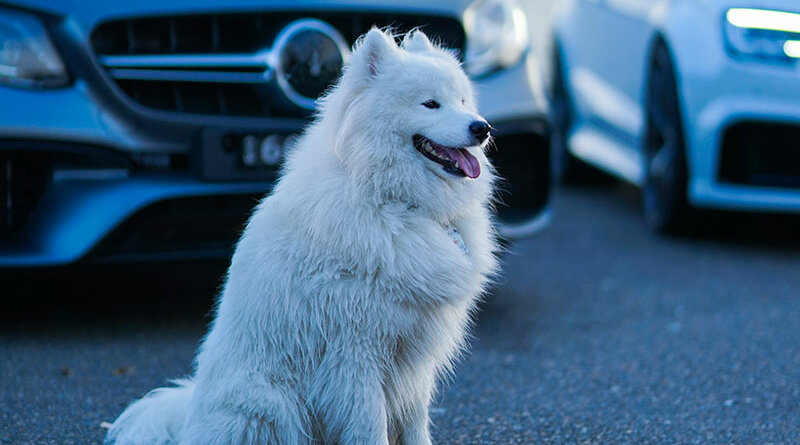Do You Wish Your Car Were More Like Your Dog?
Having grown up in Los Angeles, I don’t find the idea of an emotional relationship with my car to be a foreign concept. However, the idea that this relationship can be modeled on our relationships with our dogs certainly is a new idea.
The designers of “smart” cars seek to make the experiences of car users better. It is believed that this will increase driving pleasure and engagement as well as lead to better safety and efficiency. Recent research has focused on achieving these goals through improving users’ emotional interaction with the cars. So, what does this have to do with dogs?
Smart-car designers want to help drivers feel a connection to their cars, so naturally, they look for inspiration in relationships with strong emotional connections, and that means pet dogs. The interaction between people and their cars has the potential to be more positive, which can alleviate some of the frustration, anger and risky behavior associated with increasingly complex cars and which lead to dangerous driving. Is it really possible to mimic human-pet interactions in order to create “emotional experiences that are endearing, pleasing and relaxing”? Many designers believe so.
In a recent study titled Using Pet-Dog Behavior Traits to Enhance the Emotional Experience of In-Car Interaction, researchers determined which canine behavior characteristics elicit affection in people. Their next step was to figure out how to incorporate those dog behaviors into the design of smart cars to enhance people’s emotional experiences with the car.
GET THE BARK IN YOUR INBOX!
Sign up for our newsletter and stay in the know.
Let me be among the first to point out that there is no way a car can replace a dog in our affections. That said, I can work with the idea that making anything in life more like a dog could be an improvement.
According to the article, “The petmorphic design approach defines design attributes on the basis of intelligent devices that mimic pet-dog behavior.” The authors note that studies have yet to thoroughly explore which pet attributes most effectively lead to a meaningful emotional interaction, or how to integrate such traits into the design of smart cars.
To explore the relationship between people and their dogs, participants were asked to prepare (in advance of interviews) photos of their dogs in memorable moments and exhibiting behaviors the people found pleasing. They were asked to relate stories of situations in which they had good emotional interactions with their dogs. They were asked a lot about their understanding of their pets, with questions such as “How do you know your dog is unhappy?” and “Do you think your dog can read your mind?” They were asked to imagine that their dog’s soul was in the car and to imagine the dog’s reactions to various driving-related situations.
Those interviewed expressed positive emotions about many aspects of their relationships with their dogs. The people in this study shared that they liked it when dogs communicated their own thoughts and preferences. Another popular action by dogs was becoming excited—perhaps about going out for a walk or sniffing around at the park. Most owners appreciated their dog’s empathy, so they liked it when dogs responded to the mood of the household or acted in a thoughtful way.
People responded especially well to their dogs’ faithfulness, which comprised a variety of actions, including following them and consistently seeking to be in their presence. Recognition of their owners was also put into this category, as was dogs responding to them. Owners reported feeling close to their dogs when their dogs were seeking affection by approaching or snuggling with them, and also when they showed their dependency on care and feeding.
The interviews led designers to consider a variety of actions by dogs that can be mimicked by cars in some form. These include suggesting opinions or information, sympathizing with the driver’s feelings, showing allegiance to the driver, expressing gratitude for the driver’s care of the car, requesting understanding by the driver, and acting cute with exaggerated emotions. Specific actions by the car could be playing a soothing song or giving more detailed instructions if the driver is agitated, opening the door only for the driver, ventilating the car if the driver appears drowsy, or offering to play a song related to the weather.
The researchers discuss how focusing on the human-dog relationship and the emotional connection between our two species can improve design and satisfaction with a number of products and systems: “We expect our understanding on petmorphic design and its adoption in smart-car contexts can provide a useful approach for designing future smart products and systems to be more emotionally sensitive, natural and pleasurable in human–machine interactions.”
Designers of a new generation of smart cars are banking on the idea that part of what people want out of their car matches the benefits of their relationships with their dogs. I don’t see how the love and emotional fulfillment that comes from a relationship with a dog can ever be matched by a car. However, if anything is designed to be a bit like a dog, I’m probably going to like it more than if it bore no resemblance to dogs at all.




